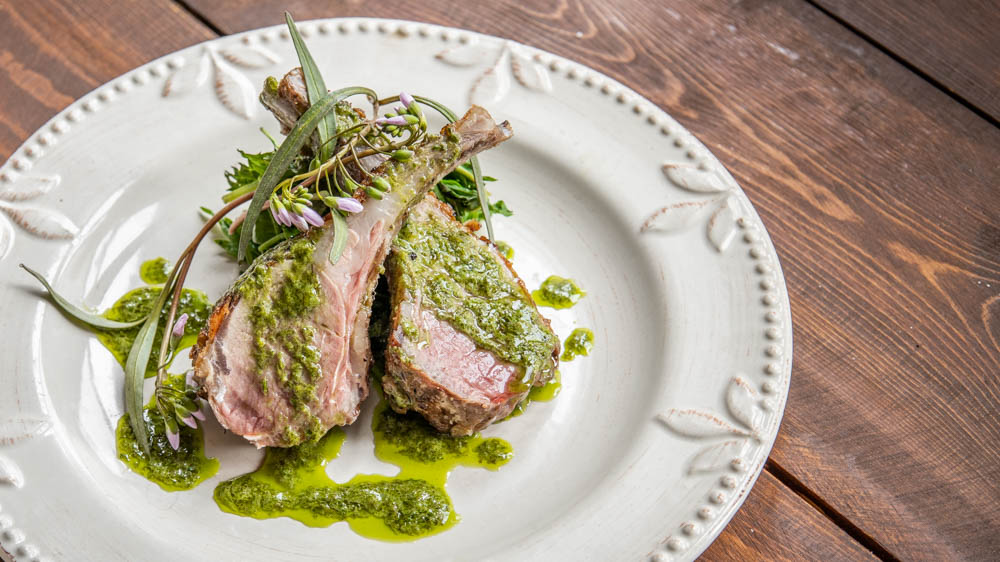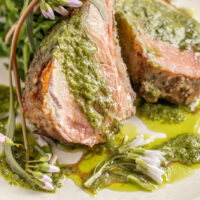Pan-Fried Goat Chops with Herb Butter (Recipe)
Tender, juicy pan fried goat chops drizzled with garlic herb butter and served with wilted greens is a simple, delicious way to enjoy an underappreciated delicacy.
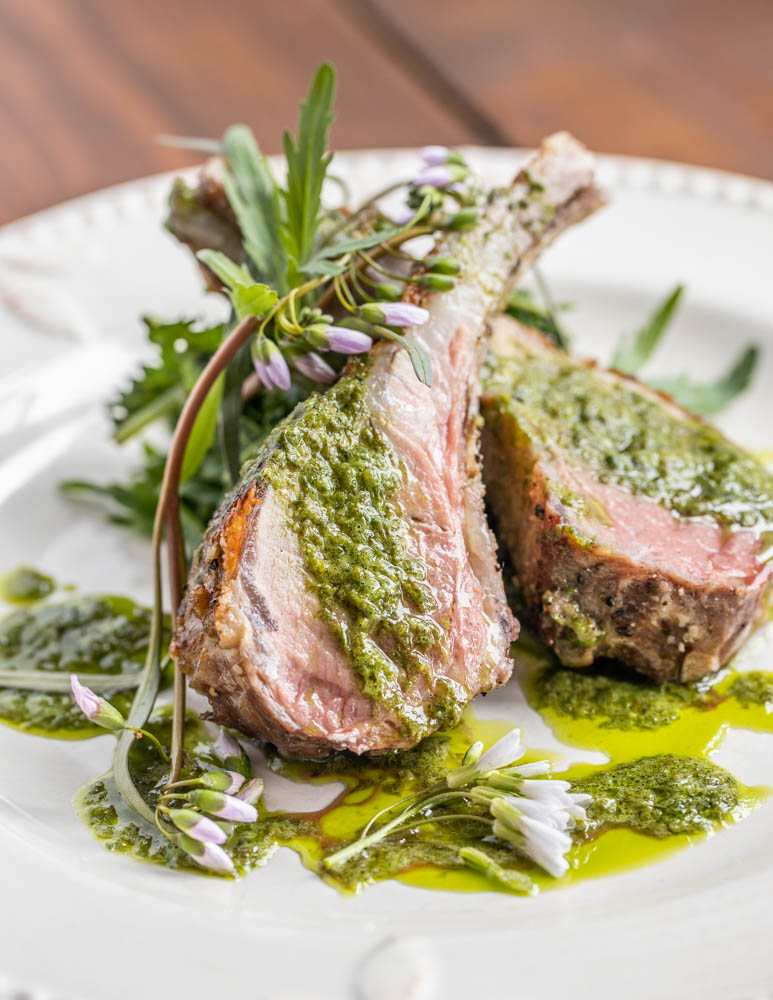
I like to serve these chops with a fresh side dish of steamed greens from my garden. Feel free to serve them with your favorite seasonal vegetables.
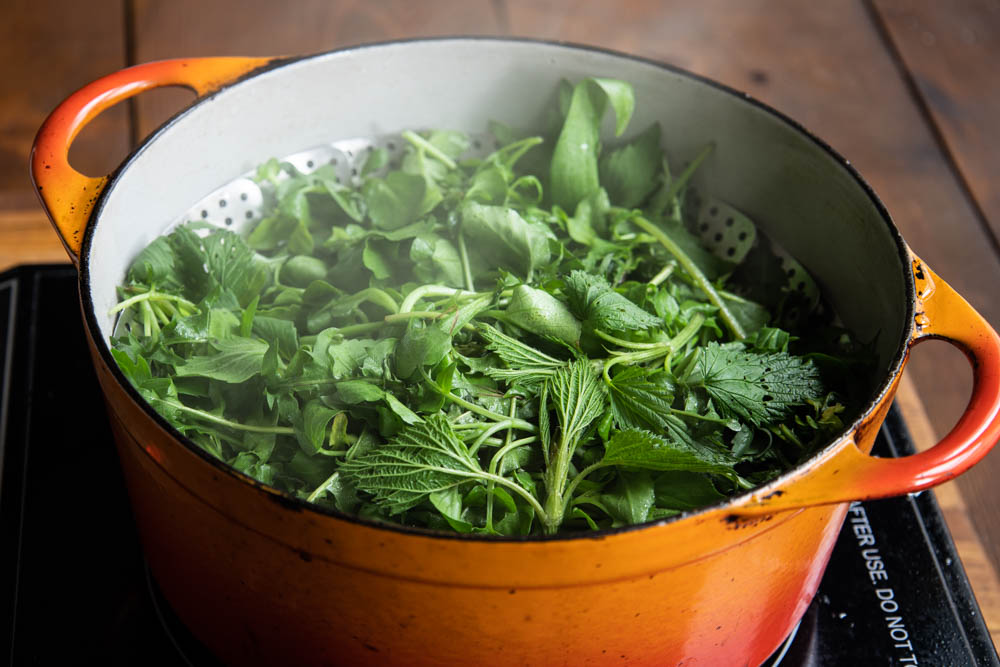
If you live in a place where it’s hard to access wild greens a mix of sauteed spinach, chard and kale is a good substitute.
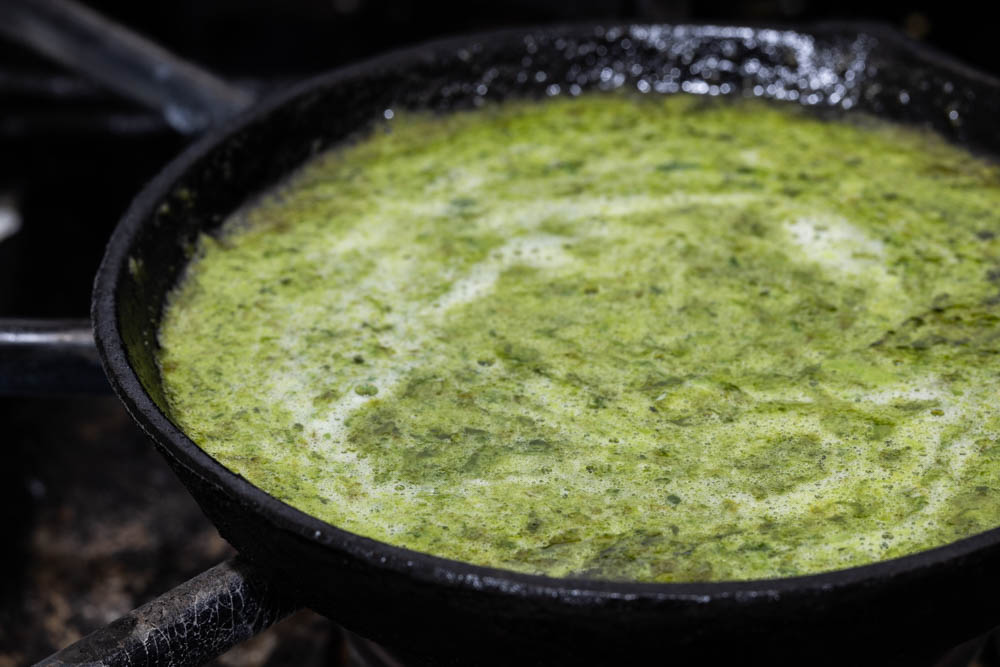
One of the best parts of the dish is ramp leaf butter-a staple in my house that I make from the young leaves of ramps / wild leeks that thrive in the valleys and hills of Wisconsin near where the lambs and goats of Shepherd Song are raised. You can substitute a little melted garlic butter finished with a dash of lemon juice. See my recipe for ramp leaf butter here.
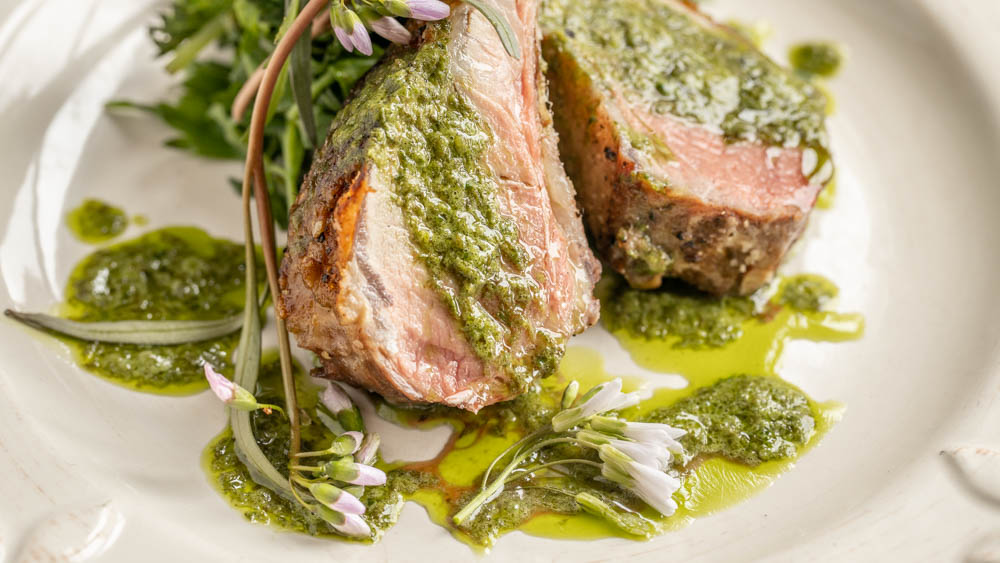

This recipe is by James Beard Award-winning Chef Alan Bergo, a chef from Minnesota and author of The Forager Chef’s Book of Flora. Learn more about Chef Alan at foragerchef.com.
More Lamb and Goat Chop Recipes
Lamb Barnsley Chops with Mustard Sauce
Pan-Fried Goat Chops with Herb Butter (Recipe)
Equipment
- 1 Heavy skillet like cast iron
Ingredients
- 16 oz goat rack 2 bones per person, or roughly half a rack
- 8 ounces fresh wild spring greens see note
- Kosher salt and fresh ground black pepper
- ¼ cup ramp butter see note
- Fresh lemon juice, a few dashes to taste
Instructions
Trim the rack and score
- Trim some of the fat from the top of the rack of goat until there’s about ¼-1/8 inch, depending on your preference. Flip the rack over and remove the thin membrane from over the rib bones on the underside (optional, but typically done in restaurants).
- Score the fat in a ½ inch cross-hatch pattern to help it to render and crisp. Cut the rack of goat in half to make two 2-bone chops, then season each chop all over with salt and pepper and allow to rest in the fridge overnight, uncovered (optional, but gives a richer flavor).
Greens
- Wash the greens well and dry them.
- Prepare a pasta pot or similar with a steaming basket and keep warm.
- Preheat the oven to 350 F.
Cook the Chops
- Put the goat chops fat-side down in a 10 inch cast iron skillet or similar, and heat on medium high heat until the fat starts to render. Drain the fat as necessary (save it for making great fried potatoes, if you like).
- Continue cooking the goat chops on the stove until the fat side is golden brown, then gently kiss the sides for a few seconds, then transfer to the oven, fat-side down, and cook for 10 minutes, or until a thermometer inserted in the center reads 135 F.
Finishing and serving
- Remove the chops and allow to rest on a paper towel in a warm place for at least 5-10 minutes before slicing.
- Meanwhile, steam the greens until just barely tender, trying not to overcook them. Very young greens may cook in 3-4 minutes, or until they're tender and taste good to you.
- Melt the ramp butter in a butter warmer or in a container in the microwave and keep warm. Just before serving, add a dash of lemon juice.
- To serve, divide the freshly steamed greens between two preheated dinner plates in a mound slightly off center near the top.
- Cut each goat chop in half and arrange them, bones pointed up, then drizzle the greens with ramp butter, as well as the chops, garnish with a few sprigs of spring wild flowers if using, and serve with lemon wedges on the side.
Video
Notes
Nutrition
